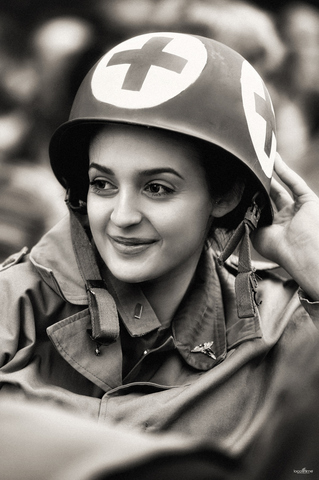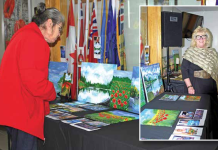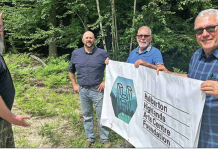By Mabel Brannigan
Struggling out of the Great Depression with 900,000 Canadians unemployed, there was an easy source of manpower for military recruiting and for staffing ammunition factories. But, by the end of 1941, so many men were overseas or had been killed in action that the pool was dry.
The National Selective Service (NSS) was established in Ottawa to tap an unheard-of source, no, not manpower, but womanpower. Prime Minister Mackenzie King told the House that young and single women were most important to the war effort. It became compulsory for women up to 24 years old to register with the NSS.
Selling this program to the public was not easy. A woman’s place in the war was the same as in peace – in the home, and the idea of women making bombs was the last straw. But the NSS persisted by telling taxpayers that women saved them tax dollars because they would do boring jobs that would drive men crazy and they would do it so much cheaper.
The NSS needed only a bit of propaganda to convince the taxpayer and it was found in ads showing women in ammunition factories with the caption, “Brave men shall not die because I faltered.”
Within a few weeks, 75,000 female workers dressed in overalls and wearing bandanas, were manning the lines. Women loved their money and newfound freedom.
I fibbed my age to get into the arsenal in Lindsay to work and can remember the men gaping into the machine plant from the foundry door in disbelief at eight girls dressed in coveralls and wearing bandanas, manning the machines.
Companies began to woo women from western farms and towns to Ontario and Quebec. The government offered day care for married women, and the men received full married tax status if they “allowed” their wives to work.
While Rosie Riveters, Winnie Welders, and Louella Lathers took over these jobs, others took over more male jobs such as bus and streetcar operator. They had to fully take over farms, and in 1942, with women for the most part driving horses and operating machinery, Canada saw record grain crops. As well, new highs in poultry and egg production were recorded.
In Haliburton County, a typical rural area, a lady doctor, endeared to everyone, would purchase the Crowe’s practice when he and Mrs. Crowe went overseas. Later, when Dr. Carroll joined the army, these three courageous souls, Dr. Jamieson, Olga Myles and Sylvia Howard, both nurses, cared for Haliburton County.
Another unsung heroine was Ruth Sawyer, who had operated the Stanhope switchboard since 1928. She had often gotten out of bed at night to deliver a baby or, without the use of antibiotics to perform her unusual gift on children with flu, pneumonia, or communicable disease. Some cures included the Eaton or Simpson catalogue wrapped in a handknit woolen sock and placed in the oven of a wood stove for extra bed heat. Onions, goose oil and camphor were included to make a cough syrup, and, of course, there was the mustard poultice. Laundry irons heated on the stove and wrapped also provided bed heat.
War brought another duty for Ruth. While she had three brothers, a boy she had raised like a son, all overseas, a daughter on active service, when a telegram came to the CNR of a boy killed in action, Ruth set out on foot, always to a mother, either a relative or friend, to deliver the sad news. Ruth and other women like her served their community and country extremely well. No medals were struck for women such as these.





